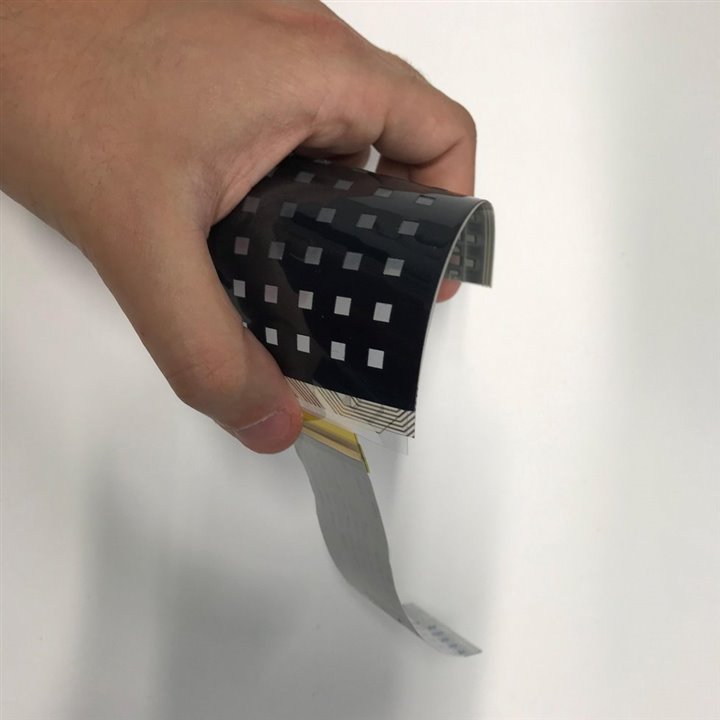
Flexible sensors can be installed on the surface of a robot in an industrial work environment, ensuring that these robots detect a human’s presence. (Image Credit: TW/e, Marco Fattori)
Robots are commonly deployed in industrial workplaces for varying task automation purposes, boosting productivity while posing health and safety risks to human workers. One solution to fix this problem involves separating robots from workers. However, this costs money and discourages human=robot interactivity. Robots outfitted with sensors that detect a human’s presence can overcome those challenges. Existing sensors require rigid, thick, and impractical silicon-based electronics. This, in turn, makes them extremely challenging to place on a robot. TW/e researchers came up with a technique for producing thin, flexible, and accurate sensor electronics that outperform many existing sensors.
“Many industrial operations require close human-robot interactions,” Marco Fattori, a researcher from the TU/e startup MicroAlign, says. “This means that the robots need accurate proximity sensors to check if someone gets too close to the robot. Once someone is detected, the robot shuts down to prevent any injuries to the person.”
Rather than using sensors relying on silicon-based electronics, the team suggests that flexible printed electronics could be more suitable. The downside is these provide fewer capabilities than silicon chips. Additionally, “flexible electronics are slow and noisy, which negatively affects its accuracy. But unlike silicon sensors, the flexible ones can be placed over large surface areas, are cheap to make, and can be produced in large quantities,” says Eugenio Cantatore from the department of Electrical Engineering.
The team, collaborating with researchers in Austria, France, and the UK, set out to develop flexible electronics that were fabricated by printing polymer organic materials. This technique makes it possible to place “front-end electronics in each pixel of the device.”

The team’s newly developed flexible sensor is made of polymer organic materials so that front-end electronics can be placed on each pixel. (Image Credit: TW/e, Marco Fattori)
“In effect, we printed electronics on a plastic or foil sheet; then we placed the sensors on another foil. After that, we laminated the two foils together, leading to an ultra-flexible and thin sensor,” says Fattori. “This combination enhances signal quality in comparison to previous sensors.”
The researchers implemented long-wavelength infrared organic pyroelectric sensors in the flexible foil. “We created a large flexible sheet filled with heat sensors that can be used to cover a structure, such as a robotic arm, for example,” says Cantatare. So to replicate an industrial work environment, they wrapped a flexible sheet of these heat sensors around a robotic arm.
“The flexible sensor acts like a sort of ‘artificial skin’ for the robot. The heat sensors allow the robot to detect the presence of a moveable heat source, such as a person, from a distance of up to 0.4 meters away,” says Fattori. “What’s more, the sensors can also detect a human hand approaching from different directions and not just from directly in front of it.”
Apart from industrial work applications, the team says their new development could also be used in the medical field. For instance, the flexible sensors could map a mattress’ pressure distribution, which can help keep bedsores at bay. Also, it can determine whether an elderly human fell in their home or care home via sensor-fitted floors.
Have a story tip? Message me at: http://twitter.com/Cabe_Atwell
